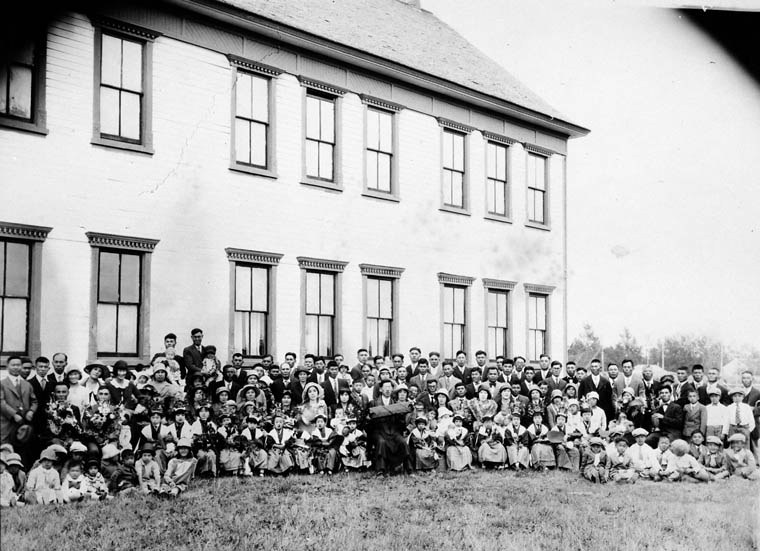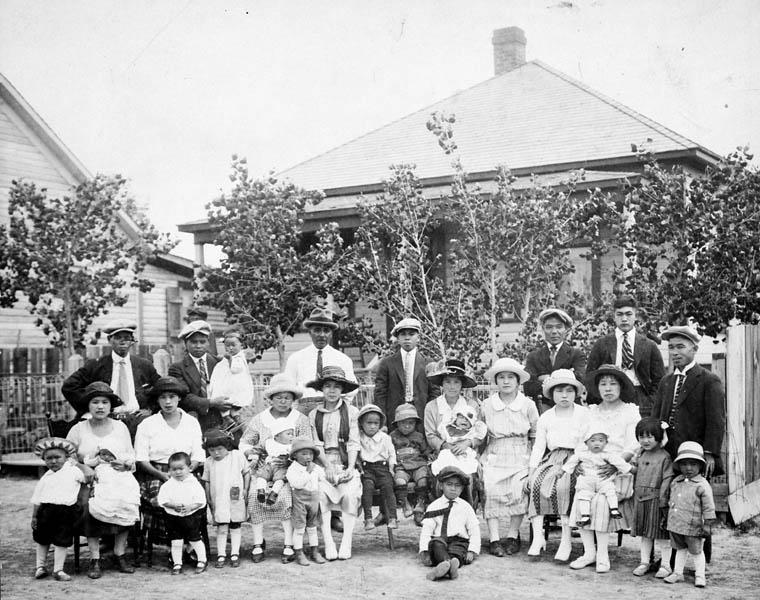Japanese Experience in Alberta National Historic Event
The Japanese experience in Alberta was designated a national historic event in 2007.
Historical importance: Continuous witness to the migration and settlement of the Japanese in Canada from their arrival through their forced relocation and the post-war reconstruction of their community and culture.
Commemorative plaque: 10 Broadway North, Raymond, AlbertaFootnote 1
At the turn of the 20th century, Japanese immigrants laid the foundations of a community that would be strengthened by the arrival of Japanese Canadians forcibly removed from the West Coast by the federal government during the Second World War. Together, they contributed to the rebuilding of the nation's Japanese community and its culture following the war. A pillar of social and cultural life for the Japanese of Alberta, the Raymond Church played a key role in the reconstruction of the Buddhist Church of Canada during this period and became a symbol of continuity and perseverance for three generations of Japanese Canadians.
Japanese Experience in Alberta
At the turn of the 20th century, Japanese immigrants laid the foundations of a community in Southwestern Alberta that would be strengthened by the arrival of Japanese Canadians forcibly removed from the West Coast by the federal government during the Second World War. Together, these groups contributed to the rebuilding of the nation’s Japanese community and its culture following the war. At the heart of this experience, both cultural and social, was the Raymond Buddhist Church. This church remained active, without interruption, from the first generation of Japanese Canadians through to the third. It served as a focal point for Japanese Buddhism east of the Rocky Mountains and played a key role in the reconstruction of the Buddhist Church of Canada after the Second World War.
The Japanese experience in Alberta is characterized by three distinct periods. First, in the early 1900s, migrant labourers came to Alberta to work in the mining, railway construction, and sugar beet industries. Some decided to stay in Alberta, near Raymond, where they bought farm lands, worked in coal mines, and raised families with spouses that had emigrated from Japan. There were soon mutual aid societies, diverse associations, a Buddhist church, and a Japanese-language school to serve the growing population, which was the largest Japanese community east of the Rockies.

© Art Tamayose / Library and Archives Canada / PA-117749

© Tamayose, Art / Library and Archives Canada / PA-117747
The second period began with the Second World War. Beginning in the summer of 1942, some 3,000 Japanese Canadians, forced from their homes on the West Coast, were sent to Alberta to work at sugar beet farms. The Japanese community of southern Alberta welcomed them and shared their experience of discrimination, which included being prohibited from the cities. When the war ended, some left for Ontario, but many stayed in southern Alberta, where the Japanese-Canadian population grew to 4,180 by 1947.
After the war, Japanese-Canadian farmers contributed greatly to the agricultural economy of Alberta, dominating potato farming by the 1970s. At the same time, many Nisei (second generation) and Sansei (third generation) left the countryside for the city. During this period, the Raymond Buddhist Church, a pillar of social and cultural life for the Japanese of Alberta, became a symbol of continuity and perseverance for three generations of Japanese Canadians. Originally constructed as a public school in 1902-03, Raymond’s Japanese Society purchased this two-storey structure in 1929. It has been a provincial historic site since 1984.
Backgrounder last update: 2018-03-07
The National Program of Historical Commemoration relies on the participation of Canadians in the identification of places, events and persons of national historic significance. Any member of the public can nominate a topic for consideration by the Historic Sites and Monuments Board of Canada.
The National Program of Historical Commemoration relies on the participation of Canadians in the identification of places, events and persons of national historic significance. Any member of the public can nominate a topic for consideration by the Historic Sites and Monuments Board of Canada.
- Date modified :
